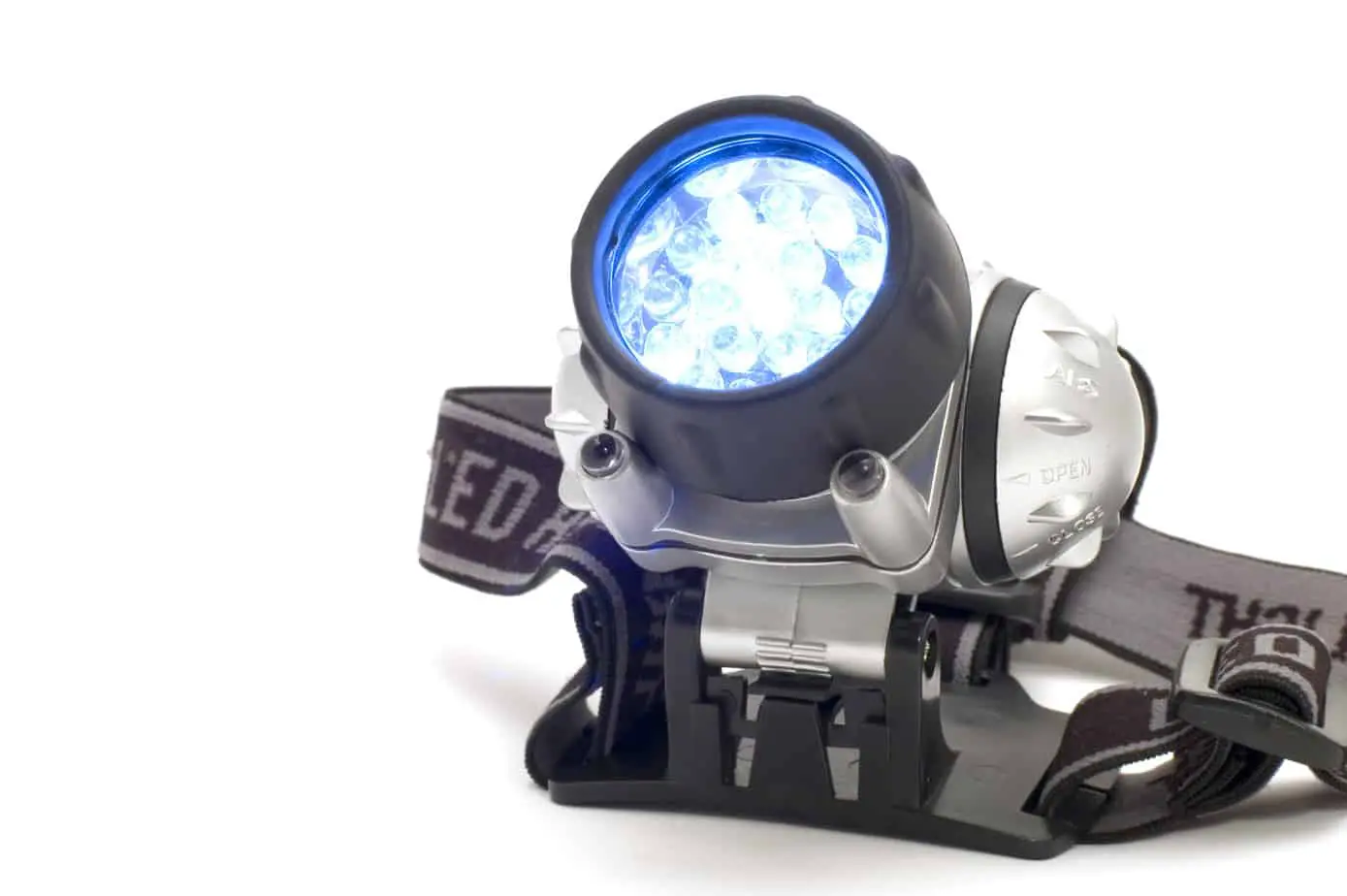
Tips on choosing the proper headlamp. Brightness, beam components, life, and more.
Headlamps are a great choice for lights. It’s very convenient to have a hands-free device. The perfect headlamp has many advantageous factors and knowing which one is right for you can be difficult. Consider what activities you’ll be doing and what components will be of most use to you. Personal preference plays a part in picking the proper personal headlamp, and it’s ok if you don’t know what works for you yet. Try out different features and compare notes.
Brightness
Lumens
The light output of the headlamp, measured in lumens, report how bright a light is at the bulb. Be careful though, a high number does not always guarantee the brightest headlight. For example, a translucent case will allow some light to escape. The way the manufacturers placed reflectors and lenses can really alter how well the lumens are utilized. You’ll especially want more intense light when climbing, biking, or on the water.
Settings
Many headlamps offer different modes of light:
Strobe is very energy efficient and good for emergency signaling.
Low is generally the one to use because most tasks don’t require much illumination.
Mid is next in the line of energy efficiency.
High is great for when you need more light for more complicated activities or distinguishing more clearly.
Zoom or Boost, the highest and most power-guzzling setting, offered on only a few models, is ideal for checking out something really quick, like the werewolf in the bushes attracted by the usable light.
Red Light
Don’t you just hate it when you’ve taken all the time to adjust your eyes to the dark and then you have to find something with your light and then you’re blind for another ten minutes? Red light acts on a lower frequency, so it isn’t as bright and shocking to your eyes, and it doesn’t mess with your night vision either.
Beam
Distance
Beam distance is how many meters a headlamp will project usable light, or how far away its light will be as bright as the light of a full moon on a clear night. In this light, a person (or werewolf) can safely wander around natural obstacles. This level of light measures around 0.25 lux. Lux is a measure of light intensity on a given surface. Like lumens, this grows progressively less and less as your batteries and bulb age. Often, you just need your headlamp to illuminate the path in front of your feet, but longer beams are useful when backpacking, climbing, and biking, because you’ll need to see farther ahead and plan your next move.
Distribution
Different headlamps will have different levels of uneven coverage. Some will have an intensely bright spot in the center that glares annoyingly, especially off of paper. Even though a light may not go as far as another, the manner in which it illuminates a surface may make it more desirable than the other. There is no set way to measure this.
Run Time
Run time, measured in hours, is how long the headlamp will be able to produce usable light, 0.25 lux, two meters away. Two meters is generally far enough to project onto the ground in front of you. If only one number is shown on the packaging, it is for the light’s most energy-efficient mode. Always be sure to check your light before leaving to make sure it’s still bright enough for however long you’ll be needing it. Longer run times are especially important for home emergency kits, backpacking, snow camping, and biking. Remember to always bring spare batteries, just in case.
Regulated Output
Some headlamps dim over time and gradually die, but a regulated output will keep a light brighter and then die abruptly. There are advantages and disadvantages to each side, but if you’re using a regulated headlamp, be extra careful to bring extra batteries so you’re not stuck in sudden, unexpected darkness.
Other
Size and Weight
Unless you use super dense batteries, most headlamps weigh under 7 ounces (about 200 grams). Most are also between the size of a golf ball and a raquet ball. Higher power ones can be much larger and heavier, but they are generally for more specific activities. Be careful of weight especially when running, backpacking, and climbing, because a few ounces can make a big difference.
Batteries
DO NOT use lithium batteries unless the instructions explicitly instruct you to do so. They can potentially ruin your headlamp. However, if you’re going into colder climates, look for lights that work with lithium. Remember, always carry backups.
Specifics
If you’re going to be participating in wet activities, such as those around rivers, caves, and snow, make sure your headlamp can resist however much you need it to.
Adjusting the headlamp is a handy tool, so make sure and get one that can be tilted if you want to be able to direct the beam more precisely.
Look for your favorite kind of power switch
The way some strap to your head can feel cumbersome or awkward. Watch out for that.

